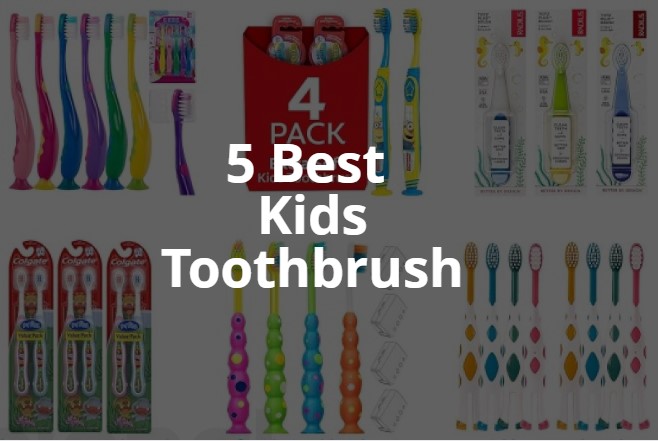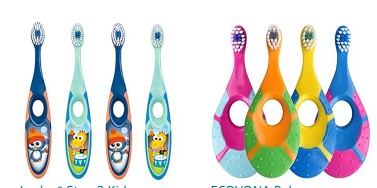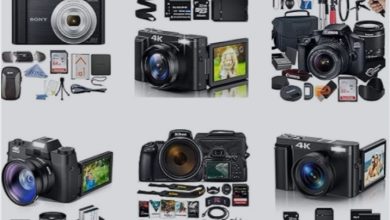How to Choose the Right Kids Toothbrush for Your Child

Welcome, concerned parents, to a blog post that tackles an important aspect of your child’s health – choosing the right Kids Toothbrush. We understand that navigating the vast array of toothbrushes available can be overwhelming. But fear not, for we are here to guide you through the process and help you make an informed decision that will positively impact your child’s dental health. With our expert tips and advice, you can rest assured that you are setting your little one on the path towards a lifetime of bright smiles. So let’s dive in and learn how to choose the perfect toothbrush for your child!
Achieve a Winning Smile with Our Top-Selling Oral Care Products






Why is choosing the right Kids Toothbrush important?
Having good oral hygiene is essential for overall health and well-being. And brushing your teeth plays a crucial role in maintaining a healthy mouth. But did you know that choosing the right toothbrush is just as important as brushing itself? In this article, we will explore the significance of selecting the appropriate Kids Toothbrush for your child’s dental hygiene and why it can make a big difference in their oral health.



The Impact of Using the Wrong Toothbrush
Using the wrong toothbrush may seem like a minor concern, but it can actually have a significant impact on your child’s dental health. Here’s why:
- Ineffective Cleaning: A toothbrush that doesn’t suit your child’s needs can result in ineffective cleaning. It may not reach all the nooks and crannies of their mouth, leaving behind plaque and bacteria that can lead to tooth decay and gum disease.
- Discomfort and Irritation: Using a Kids Toothbrush with bristles that are too hard or stiff can cause discomfort and irritation to your child’s gums. This may discourage them from brushing properly, leading to inadequate oral hygiene habits.
- Damage to Enamel: Rough bristles or an improper brushing technique can cause enamel erosion over time. Enamel is the protective layer of your child’s teeth, and once it wears away, it cannot be repaired. This can increase the risk of tooth sensitivity and cavities.
The Benefits of Choosing the Right Kids Toothbrush
On the other hand, selecting the right toothbrush for your child can bring about several benefits:
- Proper Cleaning: A toothbrush that suits your child’s age and mouth size can reach all areas of their mouth, ensuring a thorough cleaning and removing plaque effectively. This reduces the risk of tooth decay, gum disease, and bad breath.
- Comfort and Ease: A toothbrush with soft, gentle bristles will be more comfortable for your child to use. This encourages them to brush regularly and maintain proper oral hygiene habits.
- Protecting Enamel: By using a toothbrush specifically designed for children, you can protect their delicate enamel. Soft bristles combined with a correct brushing technique help prevent enamel erosion and maintain healthy teeth.
Choosing the Right Toothbrush
When choosing a Kids Toothbrush for your child, consider the following factors:
- Size: The Kids Toothbrush head should be small enough to comfortably fit in your child’s mouth and reach all areas.
- Bristles: Opt for soft bristles that are gentle on your child’s teeth and gums. Hard bristles can cause damage and discomfort.
- Age-Appropriate: Look for toothbrushes specifically designed for your child’s age group. They often come with colorful designs and features to make brushing more enjoyable.
- Electric or Manual: Electric toothbrushes can be more effective at removing plaque and may be more appealing to children. However, manual toothbrushes can be just as effective if used correctly.
- Replace Regularly: Remember to replace your child’s toothbrush every three to four months, or sooner if the bristles become frayed.
Factors to Consider When Choosing a Toothbrush
When it comes to oral hygiene, selecting the right Kids Toothbrush is crucial for maintaining optimal dental health. For parents looking to choose the perfect toothbrush for their child, there are several factors to consider. In this blog section, we will delve into the key considerations that will help you make an informed decision. Let’s dive right in!


1. Size Matters
Choosing the right size Kids Toothbrush is essential to ensure comfortable brushing and effective cleaning. Here are some points to keep in mind:
- Head Size: Opt for a toothbrush with a smaller head that can easily reach all areas of your child’s mouth, including the back molars. A compact head allows for more precise cleaning, ensuring that no tooth is left untouched.
- Bristle Length: Look for a toothbrush with shorter bristles, as they can maneuver easily around the gums and teeth, reaching tight spaces effectively. Short bristles are also less likely to cause discomfort or irritation.
2. Bristle Type
The type of bristles also plays a crucial role in maintaining your child’s dental hygiene. Here are the main options to consider:
- Soft Bristles: Soft bristles are gentle on teeth and gums, making them ideal for young children who may have sensitive gums. They effectively remove plaque and debris without causing any harm or discomfort.
- Extra-Soft Bristles: Extra-soft bristles are even more gentle, making them suitable for toddlers or children with teething discomfort. They provide a tender cleaning experience without compromising effectiveness.
- Nylon vs. Natural Bristles: Most toothbrushes use nylon bristles due to their durability and hygiene. Natural bristles, typically made of boar hair, are also an option but tend to wear down faster and may not be as easily cleaned.
3. Handle Design
The handle of a Kids Toothbrush affects both comfort and control during brushing. Consider the following aspects when choosing a toothbrush:
- Ergonomic Grip: Look for a toothbrush with an ergonomic handle design that fits comfortably in your child’s hand. A well-designed grip ensures a firm hold and better control, facilitating proper brushing technique.
- Textured Grip: Some toothbrushes feature a textured grip that provides additional slip resistance. This can be particularly helpful for young children who may struggle to hold the toothbrush correctly.
4. Age-Specific Features
Keep in mind that toothbrushes are often designed with specific age ranges in mind, offering features to cater to different developmental stages. Here are some examples:
- Toddlers: Toothbrushes designed for toddlers often feature fun and engaging designs, making brushing more enjoyable. They may also have extra safety features like a small brush head and a protective guard to prevent choking.
- Children/Teenagers: As children develop their brushing technique, consider toothbrushes with indicator bristles that fade over time, indicating when it’s time for a replacement. Electric toothbrushes with timers can also be beneficial in ensuring thorough brushing sessions.
In conclusion, choosing the right Kids Toothbrush for your child involves considering factors such as size, bristle type, handle design, and age-specific features. By taking these aspects into account, you can ensure that your child has a comfortable and effective brushing experience, enhancing their overall dental hygiene.
Remember, maintaining good oral health habits from a young age is crucial for long-term dental wellness. So, invest some time in finding the toothbrush that suits your child’s needs best – their smile will thank you in the long run!
Disclaimer: The products mentioned in this article are for illustrative purposes only and should not be considered as endorsements. It is important to consult with dental professionals or do thorough research before making a purchase.
Age-appropriate toothbrush selection
When it comes to your child’s dental care, choosing the right toothbrush plays a crucial role in maintaining their oral health. Different age groups have specific dental needs, and selecting an age-appropriate Kids Toothbrush can make brushing a more effective and enjoyable experience for your little ones. In this article, we will provide guidance on choosing the perfect toothbrush based on your child’s age. Let’s dive in!



Ages 0-2: Soft Bristles and Gentle Care
During your child’s first two years, their primary teeth are developing and emerging. As their oral hygiene routine begins, it’s important to select a toothbrush that is designed to be gentle on their delicate gums. Here are some key considerations:
- Soft Bristles: Opt for a toothbrush with soft bristles to avoid any potential harm to your child’s gums.
- Small Head: Look for a toothbrush with a small head to ensure it fits comfortably in your child’s mouth and reaches all those tiny teeth.
- Ergonomic Handle: Choose a toothbrush with an ergonomic handle that is easy for you to hold and maneuver while brushing your child’s teeth.
Some notable toothbrush options for this age group are the Colgate Kids Extra Soft Toothbrush and the Oral-B Baby Gum & Toothbrush. These toothbrushes are specifically designed to provide gentle care for your child’s developing teeth.
Ages 3-5: Building Independence with Fun
As your child transitions into the preschool years, they are ready to take on more responsibility in their oral hygiene routine. Here’s what to look for when selecting a toothbrush for this age group:
- Soft Bristles: Just like before, soft bristles are essential for maintaining gum health.
- Age-Appropriate Design: Choose a toothbrush with colorful designs or their favorite cartoon characters to make brushing more exciting and engaging for them.
- Small Head: Ensure that the toothbrush head is still small enough to reach all areas of their mouth effectively.
The Firefly Kids Toothbrush and the Oral-B Stages Power Kids Electric Toothbrush are fantastic choices for preschoolers. They combine effective cleaning with playful designs, motivating young children to brush their teeth willingly.
Ages 6-12: Brushing with Power and Precision
As your child enters elementary school, their permanent teeth start to come in. At this stage, they require a toothbrush that can effectively clean both their baby and adult teeth. Here’s what to consider:
- Soft Bristles: The importance of soft bristles remains the same to protect their gum health.
- Proper Size: Ensure the toothbrush head comfortably fits inside their mouth, allowing them to reach all areas without difficulty.
- Electric Option: Introduce an electric toothbrush, which can effectively remove plaque and encourage thorough brushing.
The Philips Sonicare for Kids and the Oral-B Pro Series are excellent electric toothbrushes that provide a deep clean while maintaining a fun experience for children. They come with various features such as timers and pressure sensors to ensure your child brushes for the recommended two minutes and avoids excessive pressure on their teeth.
Tips for encouraging regular toothbrushing habits
Oral hygiene is essential for maintaining a healthy smile and preventing dental problems. As a parent, it is crucial to instill good toothbrushing habits in your child from an early age. However, getting them excited about brushing their teeth can sometimes be a challenge. That’s why we’ve put together these practical tips to make toothbrushing a fun and engaging activity for your child.



1. Lead By Example
Children often mimic the behaviors of their parents. By making toothbrushing a priority in your daily routine, you demonstrate the importance of oral hygiene. Show enthusiasm and let your child see you enjoying the process. This will encourage them to view brushing their teeth as a positive activity.
2. Choose the Right Kids Toothbrush
Investing in a toothbrush that appeals to your child’s interests can go a long way in making toothbrushing more exciting. Consider toothbrushes with colorful designs, their favorite cartoon characters, or ones that light up. These options can help create a sense of joy and anticipation when it’s time to pick up the Kids Toothbrush.
3. Use Flavored Toothpaste
Introduce your child to flavored toothpaste as a way to make brushing more enjoyable. Many brands offer a variety of flavors such as strawberry, watermelon, or bubble gum. Let your child choose their favorite flavor so they feel involved in the process. The pleasant taste will make brushing feel like less of a chore and more like a treat.
4. Make It a Game
Turn toothbrushing into a game to make it more engaging. Set a timer for two minutes and challenge your child to brush for the entire duration. You can also incorporate songs or videos related to toothbrushing that they can enjoy while brushing. This way, they will associate toothbrushing with fun and entertainment.
5. Create a Rewards System
Implement a rewards system to motivate your child to brush their teeth regularly. Set achievable goals such as brushing twice a day for a week, and reward them with small incentives like stickers, a special outing, or a favorite treat. This positive reinforcement encourages consistency and helps create a habit of regular toothbrushing.
6. Brush Together
Brushing your teeth together can make the experience more enjoyable for your child and promote a sense of togetherness. Make it a bonding moment by sharing tips and techniques while brushing side by side. This also allows you to monitor their brushing technique and ensure they are maintaining proper oral hygiene habits.
7. Educate About the Benefits
Explain the importance of good oral hygiene to your child in a way they can understand. Discuss how brushing their teeth keeps them strong and healthy, prevents dental problems, and ensures a beautiful smile. Use age-appropriate books, videos, or educational materials to make this information more engaging and relatable.
8. Schedule Regular Dental Check-ups
Regular dental check-ups are crucial for maintaining good oral health. By taking your child to the dentist regularly, they will become more aware of the significance of toothbrushing. The dentist can reinforce the importance of oral hygiene and provide additional motivation for your child to take care of their teeth.
Remember, consistency is key when it comes to instilling good toothbrushing habits in your child. By following these tips and making toothbrushing a fun and enjoyable activity, you are setting them up for a lifetime of good oral health. Start implementing these strategies today and see the positive impact it can have on your child’s dental hygiene routine.
Choosing the Perfect Toothbrush to Spark Your Child’s Dental Health Journey
Remember, the health of our children’s teeth is in our hands, and choosing the right Kids Toothbrush is a small but significant step in ensuring their dental hygiene. By making the right choice based on size, bristle type, and age appropriateness, we can set our children up for a lifetime of good oral health. Let’s make brushing a positive experience, instilling good habits that will last a lifetime. Together, we can give our children the gift of a bright smile and a healthy mouth. Keep up the great work!

In conclusion, selecting the right toothbrush for your child is a crucial step in fostering good oral hygiene habits that can last a lifetime. The criteria outlined above are designed to assist you in making an informed choice, ensuring that your child’s toothbrush is not only effective in maintaining dental health but also safe, comfortable, and engaging for them. Remember, the best toothbrush for your child is one that they will use consistently and correctly.
FAQ: about Kids Toothbrush
Question 1: Which toothbrush is best for kids?
Answer 1: The best Kids Toothbrush is one with soft, round-ended (or “polished”) bristles, as these are gentle on their gums while effectively cleaning their teeth. Additionally, the size of the brush head should be appropriate for your child’s age, ensuring it comfortably fits in their mouth.
Look for toothbrushes with ergonomic handles for easy gripping by small hands. It’s also beneficial to choose a toothbrush that visually appeals to children, possibly featuring bright colors or favorite characters, to make brushing a more enjoyable and engaging experience for them. This approach can help establish a positive attitude towards oral hygiene from an early age.
Question 2: Which is the top-rated electric toothbrush for kids?
Answer 2: The Philips Sonicare Kids Rechargeable Toothbrush stands out as the leading choice. This toothbrush impresses with its high-quality build and efficient cleaning capabilities. It includes a convenient charging base unit, eliminating the need for frequent battery replacements. An added advantage is its compatibility with an interactive app, which offers fun incentives to encourage children to brush more effectively and regularly. The toothbrush also features customizable stickers, allowing kids to personalize it, and it has multiple brush head sizes to cater to different age groups. Its gentle and effective cleaning action makes it a favorite among both parents and dental professionals for maintaining children’s oral health.
Question 3: Is electric or regular toothbrush better for kids?
Answer 3: The effectiveness of both electric and regular toothbrushes in maintaining children’s dental health is fairly similar, provided they are used properly. Electric toothbrushes, however, often have features that can be more appealing to children, such as colorful designs, built-in timers, and interactive elements that pair with apps to make brushing more engaging. These features can be particularly motivating for children who are less enthusiastic about oral hygiene, encouraging them to brush regularly and effectively. Additionally, electric toothbrushes can be easier for children to use as they provide consistent brushing motion and pressure, which is beneficial for young ones still mastering their brushing technique. Ultimately, the best choice depends on the child’s preferences and their ability to use the toothbrush correctly to maintain good oral hygiene.
Question 4: Do dentists recommend electric toothbrush for kids?
Answer4: Dentists generally recommend electric toothbrushes for children, especially starting from around the age of 5 or 6. These toothbrushes are designed to be child-friendly, often featuring softer bristles and smaller heads to suit a child’s mouth. A significant advantage of electric toothbrushes is their interactive features. Many models include a built-in timer, which helps ensure that children brush for the dentist-recommended two minutes. Additionally, some electric toothbrushes can connect to smartphone apps that provide fun brushing games and educational content, making the brushing experience more engaging and effective. These features not only encourage proper brushing habits but can also make the routine more enjoyable, helping to instill good oral hygiene practices from an early age.
Question 5: What are the reasons against using electric toothbrushes for toddlers?
Answer 5: When it comes to toddlers using electric toothbrushes, the primary concern is safety and suitability. With the right guidance and adult supervision, electric toothbrushes can be safe for children aged 3 and above. However, for children younger than 3 years, manual toothbrushes are generally recommended. This is because toddlers have smaller, more sensitive mouths and are still developing their motor skills.
Manual toothbrushes are easier for them to handle and allow for gentler brushing. Additionally, the vibrations and movements of an electric toothbrush might be overwhelming or uncomfortable for very young children. It’s important for parents to introduce oral hygiene practices in a way that is both safe and comfortable for their child’s age and development stage. As always, it’s advisable to consult with a pediatric dentist for personalized recommendations based on the child’s specific needs and development.
When it comes to choosing the right toothbrush for their children, parents are often faced with a multitude of options and factors to consider. The importance of selecting a suitable Kids Toothbrush cannot be overstated, as it plays a pivotal role in establishing healthy oral hygiene habits from a young age. Understanding this, our readers have identified the most critical criteria to guide parents in making an informed decision.
These criteria are not just about ensuring effective cleaning; they also encompass safety, comfort, and making the process of brushing teeth enjoyable for children. From the softness of the bristles to the design of the handle, every aspect contributes to the overall dental health and brushing experience of the child.
Your opinion matters to us, and we would love to hear about your experiences and any additional tips you might have. Please feel free to comment and share our article on social networks. By doing so, you can help other parents navigate the wide array of options and choose the best Kids Toothbrush for their children. Together, we can ensure that our kids grow up with healthy, happy smiles!
Here, we present a carefully curated list of these essential criteria, reflecting the collective insights of parents who understand the importance of choosing the right toothbrush for their children's dental care journey.
Age Appropriateness: Choose a toothbrush specifically designed for the child's age group. Manufacturers typically produce toothbrushes suited for different age ranges, ensuring the size and design are appropriate for each developmental stage. - 9.4
Bristle Softness: Opt for toothbrushes with soft bristles. Soft bristles are gentle on a child's sensitive gums and developing teeth. Hard bristles can be harsh on their enamel and gums. - 8.5
Handle Design: Look for toothbrushes with ergonomic handles. These are easier for children to grip and maneuver, making the brushing process more effective and comfortable for them. - 8.4
Head Size: The toothbrush head should be small enough to comfortably fit in the child’s mouth and reach all areas easily. A large head can be difficult for a child to use and might not clean as effectively. - 9.4
Safety Features: Ensure the toothbrush does not have any small parts or detachable pieces that could pose a choking hazard. Also, the materials used should be non-toxic and safe for children. - 9
Appealing Design: Children are more likely to use a toothbrush that they find visually appealing. Bright colors, favorite characters, or fun themes can make brushing more attractive and enjoyable for them. - 9.3
Effectiveness: Consider the effectiveness of the toothbrush in cleaning teeth and removing plaque. This may involve looking at specific design features or reading reviews and recommendations. - 9.7
Electric or Manual: Decide between an electric or manual toothbrush. Electric toothbrushes can be more engaging and do some of the work for the child, but manual toothbrushes can be just as effective if used properly. - 8.5
Dentist Recommendations: Consult with your child’s dentist for specific recommendations, especially if your child has special dental needs or concerns. - 10
Durability and Cost: Evaluate the durability and cost of the toothbrush. While children's toothbrushes need to be replaced regularly, they should still last a reasonable amount of time without falling apart or losing bristle integrity. - 9.3
9.2
Score:
Remember, the best toothbrush for your child is one that they will use consistently and correctly. We encourage you to consider these guidelines carefully and choose a toothbrush that meets your child's specific needs and preferences.








I never thought about the size of the toothbrush head. That’s definitely something I’ll be looking for now.
I appreciate the emphasis on supervising and teaching proper brushing techniques. Thank you!
My child has braces. Are there any specific toothbrushes you would recommend for cleaning around the brackets?
Great article! I didn’t realize there were so many factors to consider when choosing a toothbrush for my child.
Is there a certain age when kids should start using adult toothbrushes?
I have a toddler who hates brushing her teeth. Any tips on how to make it more enjoyable for her?
Could you explain the difference between soft, medium, and hard bristles and which one is best for children?